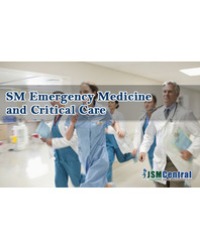
Clinical Profile and Outcome of Critically ill adult patient’s presenting to an Urban Emergency Department in Sub Saharan Africa: A Prospective Cohort Study in Tanzania
Background: Management of critically ill patients is a worldwide challenge but the complexity is even greater in low resource countries due to patient delay in seeking care, limited diagnostic and treatment options and lack of in-route care to appropriate health care facilities. Timely patient evaluation, resuscitation and continuous care of critically ill patients from the Emergency Medicine Department (EMD) to Intensive Care Unit (ICU) can reduce poor patient outcome. This study aim to describe the clinical profile and 24 hours outcome of critically ill adult patients presenting to the EMD of Muhimbili National Hospital (MNH)
Methods: This was a prospective, descriptive cohort study of non-trauma critically ill adult patients presenting to the EMD of MNH from April to October, 2018. Patients were considered critically ill if they had a Triage Early Warning Score (TEWS) of greater than 7 (RED) or had a critical intervention performed. A structured case report form were used to document demographics, clinical presentation, diagnostic evaluation, treatment at EMD, disposition and 24hours hospital outcome.
Results: During the study period, 7597 patients attended the EMD and 527 (5.4%), met criteria for being critically ill. Among them 274 (52%) were male and the overall median age was 35 [IQR 25-44] years. The majority (477, 90.5%) of critically ill patients were disposed to general ward, and 19 (4.4%) died within 24hours; 50 (9.5%) were admitted to ICU and 5 (10%) died within 24hours. Among those patients that died within 24hours, majority has pre-existing CKD (10.8%) followed by diabetes (8.1%). HIV/AIDS and Hypertension were 5.2% and 5.1% respectively.
Conclusion: In this ED in Sub Saharan Africa, only minority of critically ill patient with indications for ICU admission are admitted to ICU. The overall 24-hours survival rate is high among those admitted to general ward than those in ICU. Further studies need to evaluate the reasons mortality in ICU compared to general ward.
Michael K. Kiremeji¹, Said Kilindimo¹,²*, Hendry R. Sawe¹,², Deus Kitapondya¹, Uwezo Edward¹, Asha Iyullu¹, and Ellen J. Weber³
